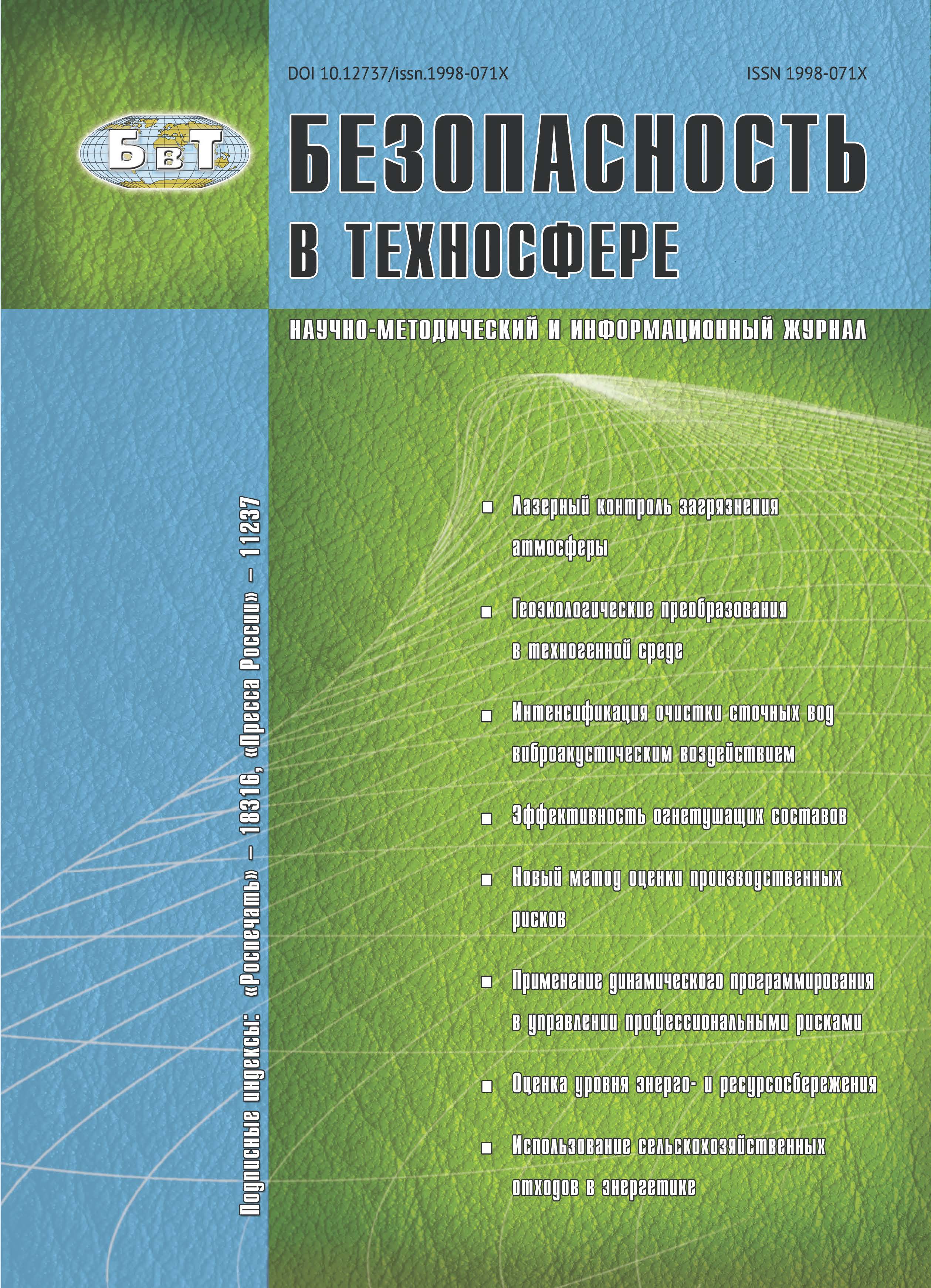Moskva, Moscow, Russian Federation
The results of experimental study of wall-free non-stationary fire vortices are presented. The generation of vortical structures occurred by the burning of pellets of urotropine (hexamethylenetetramine) located on the underlying surface (sheet of aluminum). Unlike most previous research experiments the mechanical twisting devices and the shear air stream to get fire vortex structures were not used. It was assumed that the generation of fire whirls occurred due to the instability of the combustion process. Experimental data on the conditions of fire whirls generation (number of pellets, generation start time and thermal power) and their integral parameters (life time, height and diameter) have been received.
non-stationary fire whirls, generation of fire whirls, physical modeling.
1. Введение
Огненные смерчи наряду с воздушными смерчами являются примерами экологических катастроф, наносящими большой ущерб окружающей среде и приводящими к многочисленным разрушениям и жертвам. Огненные вихри — вертикально ориентированные вращающиеся огненные факелы, драматически увеличивающие опасность природных и техногенных пожаров и их последствия [1, 2]. По сравнению с воздушными смерчами огненные смерчи довольно редкие природные явления, возникают при крупных лесных пожарах, массовых пожарах в городах и авариях на крупных пожароопасных объектах нефтехимии, лесоперерабатывающей промышленности и др. (рис. 1 на с. 2 обложки). Последствиями атомной бомбардировки Хиросимы и массированных бомбежек Гамбурга и Дрездена военно-воздушными силами США во время второй мировой войны стали опасные продолжительные неуправляемые пожары [3]. После множественных одновременных возгораний в условиях города, плотно насыщенного горючими материалами, пламена сливались, образуя однородно горящую площадь, вследствие чего возникали огненные смерчи.
1. Gess D., Lutz W. Fire Storm in Peshtigo: A Town, Its People and the Deadliest Fire in American History, Henry Holt Publishing, 2002.
2. Forthofer J. M., Goodrick S. L. Review of Vortices in Wildland Fire. J. Combust. - 2011. - Article ID984363. - 14 pp.
3. Ebert C. H.V. Hamburg`s Fire Storm Weather. NFPA Quarterly. - 1963. - V. 56. - P. 253-260.
4. Battaglia F., Rehm R. G., Baum H. R. The Fluid Mechanics of Fire Whirls: An Inviscid Model. Phys. Fluids. - 2000. - V. 12. - № 11. - P. 2859-2867.
5. Battaglia F., McGrattan K.B., Rehm R. G., Baum H. R. Simulating Fire Whirls. Combust. Theory Modell. - 2000. - V. 4. - P. 123-138.
6. Snegirev A. Y., Marsden J. A., Francis J., Makhviladze G. M. Numerical Studies and Experimental Observations of Whirling Flames. Int. J. Heat Mass Transfer. - 2004. - V. 47. - № 12-13. - P. 2523-2539.
7. Zhou R., Wu Z. - N. Fire Whirls Due to Surrounding Flame Sources and the Influence of the Rotation Speed on the Flame Height. J. Fluid Mech. - 2007. - V. 583. - P. 313-345.
8. Kuwana K., Morishita S., Dobashi R., Chuah K. H., Saito K. The Burning Rate`s Effect on the Flame Length of Weak Fire Whirls. Proc. Combust. Inst. - 2011. - V. 33. - P. 2425-2432.
9. Emmons H. W., Ying S. J. The Fire Whirl. Proc. Combust. Inst. - 1967. - V. 11. - P. 475-488.
10. Chuah K. H., Kushida G. The Prediction of Flame Heights and Flame Shapes of Small Fire Whirls. Proc. Combust. Inst. - 2007. - V. 31. - P. 2599-2606.
11. Lei J., Liu N., Zhang L., Satoh K. Temperature, Velocity and Air Entrainment of Fire Whirl Plume: a Comprehensive Experimental Investigation. Combust. Flame. - 2015. - V. 162. - P. 745-758.
12. Byram G. M., Martin R. E. Fire Whirlwinds in the Laboratory. Fire Control Notes. - 1962. - V. 33. - P. 13-17.
13. Byram G. M., Martin R. E. The Modeling of Fire Whirlwinds. Forest Science. - 1970. - V. 16. - № 4. - P. 386-399.
14. Martin R. E., Pendleton D. W., Burgess W. Effect of Fire Whirlwind Formation on Solid Fuel Burning Rates. Fire Technology. - 1976. - V. 12. - № 1. - P. 33-40.
15. Lei J., Liu N., Zhang L., Chen H., Shu L., Chen P., Deng Z., Zhu J., Satoh K., de Ris J. L. Experimental Research on Combustion Dynamics on Medium-Scale Fire Whirl. Proc. Combust. Inst. - 2011. - V. 33. - P. 2407-2415.
16. Kuwana K., Sekimoto K., Minami T., Tashiro T., Saito K. Scale-Model Experiments of Moving Fire Whirl over a Line Fire. Proc. Combust. Inst. - 2013. - V. 34. - P. 2625-2631.
17. Zhou R., Wu Z. N., Fire Whirls due to Surrounding Flame Sources and the Influence of the Rotation Speed on the Flame Height. J. Fluid Mech. - 2007. - V. 583. - P. 313-345.
18. Zhou R. Applications of the Equivalent Gap Fraction Criterion Method for Fire Whirl Risk Evaluation and Prevention in a Real Fire Disaster. Fire Technology. - 2014. - V. 50. - P. 143-159.
19. Varaksin A. Yu., Romash M. E., Kopeitsev V. N. The Possibility of Generation of Concentrated Fire Vortices without Forced Swirling. Doklady Physics. - 2014. - V. 59. - № 5. - P. 203-205.
20. Varaksin A. Yu., Protasov M. V., Romash M. E., Kopeitsev V. N. Generation of Free Concentrated Fire Vortices under Laboratory Conditions. High Temperature. - 2015. - V. 53. - № 4. - P. 595-598.






